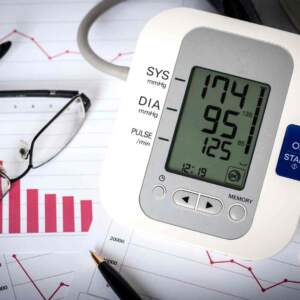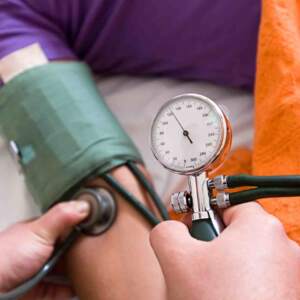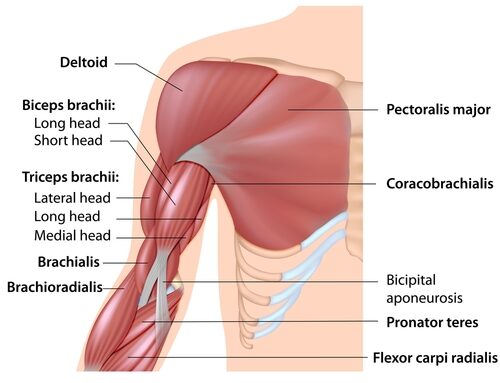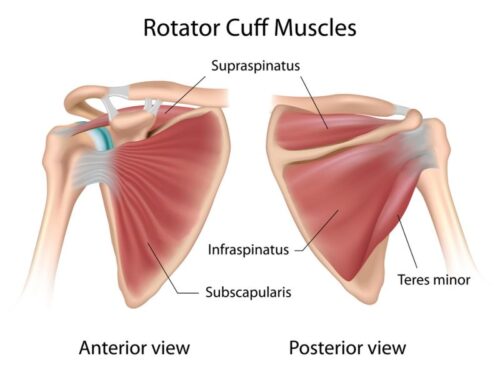High blood pressure, also called hypertension, is a common and dangerous condition that affects millions of people around the world. It’s important to know what causes it and how to identify symptoms in order to protect your health. In this article, we’ll take an in-depth look at high blood pressure symptoms and causes so you can be better equipped to recognize any potential issues.
around the world. It’s important to know what causes it and how to identify symptoms in order to protect your health. In this article, we’ll take an in-depth look at high blood pressure symptoms and causes so you can be better equipped to recognize any potential issues.
The first paragraph will explore the typical signs of having high blood pressure. Knowing these warning signals may help you spot possible problems before they become too serious or lead to other complications down the road. We’ll also discuss different risk factors associated with developing hypertension, such as certain lifestyle choices or medical conditions. Finally, we’ll talk about some steps you can take if you believe you might have high blood pressure.
High blood pressure isn’t something to ignore – its effects can range from mild fatigue all the way up to life-threatening strokes or heart attacks. That’s why it’s essential for everyone to understand what constitutes healthy versus unhealthy levels of blood pressure and how it relates to their overall well-being. Let’s dive right into understanding more about high blood pressure symptoms and causes!
What Is Hypertension
Hypertension, or high blood pressure, is a serious medical condition that can lead to severe health complications. It occurs when the force of the blood pushing against your blood vessels becomes too elevated for an extended period of time. This increased amount of pressure on your arteries and veins can cause damage over time if it’s not managed correctly.
High blood pressure readings are determined by two measurements: systolic blood pressure (the top number) and diastolic blood pressure (the bottom number). Generally speaking, optimal levels should be below 120/80 mmHg. Anything higher than this could indicate hypertension and requires further investigation from a healthcare professional to determine the best course of action. If your blood pressure reading is consistently over 140/90, it is time for medical intervention. High blood pressure is one of the main risk factors for cardiovascular disease and stroke, so it’s important to get regular check-ups even in the absence of symptoms. The Centers for Disease Control recommends adults over 18 years old receive at least one screening every year as part of their routine physical exam. If you have any concerns about your own blood pressure readings, please contact your doctor right away.
Who Is At Risk For Hypertension
 People with primary hypertension don’t always have identifiable causes for their high blood pressure; however, certain lifestyle habits can put people at an increased risk for developing it. There are about 65 million Americans that have high blood pressure, and men are typically diagnosed more frequently than women.
People with primary hypertension don’t always have identifiable causes for their high blood pressure; however, certain lifestyle habits can put people at an increased risk for developing it. There are about 65 million Americans that have high blood pressure, and men are typically diagnosed more frequently than women.
Risk factors include age—half of the people over 60 have hypertension—genetics, inactive lifestyle, having diabetes or kidney problems, smoking cigarettes, consuming too much alcohol or salt in the diet, being overweight or obese, and excessive stress. It’s especially important to recognize these risk factors if you’re over 40 years old because that’s when your chances of getting hypertension increase significantly.
Fortunately, several strategies are available to help lower your blood pressure levels naturally, such as exercising regularly, maintaining a healthy weight through proper nutrition and dieting modifications, limiting alcohol consumption, and quitting smoking if applicable. The most important thing is to become aware of any risks associated with hypertension so that preventative measures can be implemented to reduce the chance of developing this dangerous condition.
What Causes It
High blood pressure is caused when the force of the blood against artery walls becomes too high. Blood pressure is measured at two moments: the ventricular contraction (systolic pressure) and the ventricular relaxation (diastolic pressure).
There are several variables that influence your blood pressure reading. Pressure from inside the blood vessels (increases when there is a buildup of material inside); pressure from outside the blood vessels (caused from excess fluid), blood volume and blood vessel diameter. If one of these are out of balance with the others, it may cause excessive pressure.
What Are The Types Of Blood Pressure
When it comes to blood pressure, there are two types. Essential hypertension is when elevated blood pressure is not caused by another pathology. Secondary high blood pressure usually results from other complications like pregnancy, kidney disease, or a hormonal disorder.
Secondary hypertension clears up when the causing complication goes away. 95% of hypertension is essential hypertension.
In both essential and secondary hypertension, a patient may suffer from malignant hypertension. This is when diastolic blood pressure numbers rises very quickly, in a matter of weeks or months. It is damaging to the body and if left untreated can be deadly. It is a medical emergency.
A normal blood pressure reading is under 120/80. Prehypertension is a blood pressure measured 120-139/80-89. Stage 1 hypertension is 140-159/90-99 and stage 2 hypertension is over 160/100.
How Is It Diagnosed
High blood pressure can be diagnosed through a physical exam and a few simple tests. During the physical exam, your doctor will measure your systolic and diastolic blood pressure with a blood pressure cuff. Systolic is when your heart beats while pumping out blood, and diastolic is when it relaxes between beats. High readings of either of these may indicate that you have high blood pressure. The health care professional will typically take 2-3 readings with the blood pressure cuff and use the average of the readings. It is normal for a patient to experience increased blood pressure when visiting the doctor.
your doctor will measure your systolic and diastolic blood pressure with a blood pressure cuff. Systolic is when your heart beats while pumping out blood, and diastolic is when it relaxes between beats. High readings of either of these may indicate that you have high blood pressure. The health care professional will typically take 2-3 readings with the blood pressure cuff and use the average of the readings. It is normal for a patient to experience increased blood pressure when visiting the doctor.
Your doctor may also order additional tests to help determine if you are developing high blood pressure or to see if any underlying health conditions could be causing it. These tests may include an electrocardiogram (ECG) and echocardiogram. Depending on the results of these tests, your doctor might recommend lifestyle changes or medications to prevent high blood pressure or manage existing one. Untreated high blood pressure increases your risk for serious medical problems such as heart disease, stroke, heart attack, heart failure, kidney damage, and vision loss. Therefore it is important to get high blood pressure diagnosed very early so you can begin proper treatment right away.
What Are The Symptoms And Signs
When someone has increased high blood pressure, they may experience chest pain due to the heart having to work harder in order to pump the extra amount of blood through the body. Other symptoms include headaches, dizziness, blurred vision and difficulty sleeping. If left untreated, long-term complications can occur such as damage to organs including the heart, kidneys and eyesight. A person is at high risk for hypertension if they have a family history of hypertension and if the are carrying excess weight.
It’s important for people who have been diagnosed with high blood pressure to take steps towards lowering it by making lifestyle changes such as reducing salt intake and exercising more regularly. In addition, medications can be prescribed if needed which help reduce high blood pressure further. Taking these measures can help prevent long-term health problems associated with uncontrolled high blood pressure levels.
What Are Complications Of High Blood Pressure
 High blood pressure, or hypertension, can cause a range of serious issues if it is not managed. People with very high blood pressure may experience complications such as an increased risk of heart disease and stroke, kidney damage, vision loss and more.
High blood pressure, or hypertension, can cause a range of serious issues if it is not managed. People with very high blood pressure may experience complications such as an increased risk of heart disease and stroke, kidney damage, vision loss and more.
Edema—High blood pressure forces fluid out of the capillaries at the nutrient-waste exchange sites, increasing levels of interstitial fluid and causing edema.
Atherosclerosis- high blood pressure wears out the walls of the vessels causing narrowed arteries
Vision problems- chronic high blood pressure can damage the blood vessels to the eyes. This causes permanent visual distortion.
Kidney disease- hypertension causes plaques to form in the renal arteries. This impairs kidney function and leads to kidney damage, edema and even higher high blood pressure from that edema.
Aneurysm- when high blood pressure causes a bulge in the artery.
Stoke- high blood pressure may cause an embolism or from ruptured arteries in the brain
Enlarged heart- pushing against narrowed arterial walls causes the left ventricle in the heart to grow considerably but the arteries don’t grow with it to handle the load. The muscle fibers are weakened. Because of this, the contractions are weaker. This can cause angina and, ultimately, heart failure.
Treatment
Individuals should work with a healthcare professional to create an individualized treatment plan based on their unique needs and goals to manage and treat high blood pressure more effectively. This plan to lower blood pressure often includes healthy lifestyle habits like reducing sodium intake, exercising regularly, eating heart-healthy foods, being careful of too much alcohol consumption, and quitting smoking. In some cases, medication may also be prescribed to keep the patient’s blood pressure safe. By taking these steps, people with high blood pressure can reduce their risk of experiencing any potential complications from the condition.
In summary, several methods are available for treating high blood pressure, ranging from simple lifestyle modifications to medication and even hospitalization if appropriate. It is important to consult your doctor before making any major decisions regarding treatment options so you can make sure the best approach is taken for your particular case of hypertension. [How Saunas Can Help Hypertension]
Is Massage Good For Hypertension
When it comes to high blood pressure, controlling symptoms and causes are key. But is massage a viable treatment  option? While the National Heart, Lung and Blood Institute states that massage should not be used as an alternative for lowering blood pressure to traditional treatments, it could help reduce stress which can contribute to hypertension.
option? While the National Heart, Lung and Blood Institute states that massage should not be used as an alternative for lowering blood pressure to traditional treatments, it could help reduce stress which can contribute to hypertension.
If a client does not take medication for high blood pressure then massage is totally fine and will help with overall blood flow. The massage therapist will watch that the massage does not over challenge the body by causing clamminess and possible edema in the days after the massage.
If a client does take medication the massage therapist needs to be careful about using techniques that move alot of fluid. And whether the client takes medication or not, abdominal massage should be avoided.
Massage therapy may offer some health benefits for those with hypertension and lower blood pressure by helping them relax and reducing stress levels associated with the disease. Massages increase the circulation of oxygenated blood throughout the body, allowing for better delivery of nutrients to muscles while promoting relaxation and decreasing tension. Although more research is needed on its effects on high blood pressure specifically, many people have reported feeling relief from their symptoms after receiving massages regularly. Schedule your appointment here!
Conclusion
High blood pressure, or hypertension, is a serious condition and needs to be monitored. It’s important to understand the causes so you can work with your doctor on prevention measures. Hypertension can have serious health consequences if not properly managed.
I hope I’ve been able to provide some insight into what it looks like and how it manifests itself in those at risk for developing it. Treatment options are available depending on the severity of your symptoms, so don’t hesitate to discuss these with your doctor. Massage may be beneficial as part of an overall treatment plan but is not recommended as a standalone solution.
It’s essential to maintain regular check-ups with healthcare professionals if you’re at risk for hypertension or already have it. Doing so will help ensure that any potential complications are caught early and treated quickly before they become more severe. Taking care of yourself by following lifestyle changes such as diet and exercise will also go a long way in helping manage or even prevent hypertension altogether.







